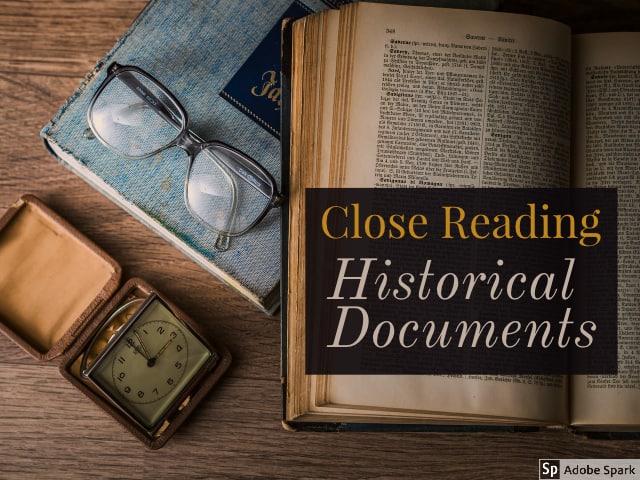Prep for this class – in advance students should complete these two lessons.
- Zulu Chief Photograph link to Google form
- Evaluating Sources Exercise link to Google doc
- ABCs for Baby Patriots exercise using images
- Map activity using Route of the Mormon pioneers from Nauvoo to Great Salt Lake, Feb’y 1846-July 1847
Teachers can use historical documents to build literacy skills in a content area while empowering students to be the historian in the classroom. But document-based instruction in this context requires four key elements to be successful:
- The right documents. (shouldn’t be reliant on background knowledge)
- Knowing how to “read” the historical document.
- Letting students discover their own patterns, then asking students to describe, compare and defend what they found.
- Basing the task on enduring questions, the kind that students might actually want to answer.
Class 7 offers strategies for assisting students to more closely read a document (in all their multimedia formats) by answering three Common Core questions.
Broad version
- What does it say?
- How does it say it?
- What’s it mean to me?
More specifically, what do we mean by close reading? Teachers can guide students with scaffolding questions that explore “texts” (in all their forms).
- Key Ideas and Details: What does the text say? Identify the key ideas. What claims does the author make? What evidence does the author use to support those claims?
- Craft and Structure: Who created the document? What’s their point of view / purpose? How did the text say it? How does it reflect its historic time period?
- Integration of Knowledge and ideas: Distinguish among fact, opinion, and reasoned judgment in a text. Recognize disparities between multiple accounts. Compare text to other media / genres. How does it connect to what we’re learning? And what’s it mean to me?
Assignment 5
Students will prepare to teach their second lesson to peers during the two classes noted below. As they did last time they will do a blog post to introduce the lesson and following the lesson. Students are strongly encouraged to try integrating some tech into the lesson. Here’s ideas for using Google tools.
The introductory blog post can highlight:
- target audience
- content (what will be studied)
- process (what will you do – what will students do)
- resources for lessons
Class 8 (10/22) Nicole | Nick K | Gabe
Class 9 (10/29) Jana | Nick C | Jordan
I’m also recommending that students join the Teaching With Primary Sources Network. A great place to discover and share classroom ideas. It’s free and member only – so no spammy social media stuff. Sign up info here.

